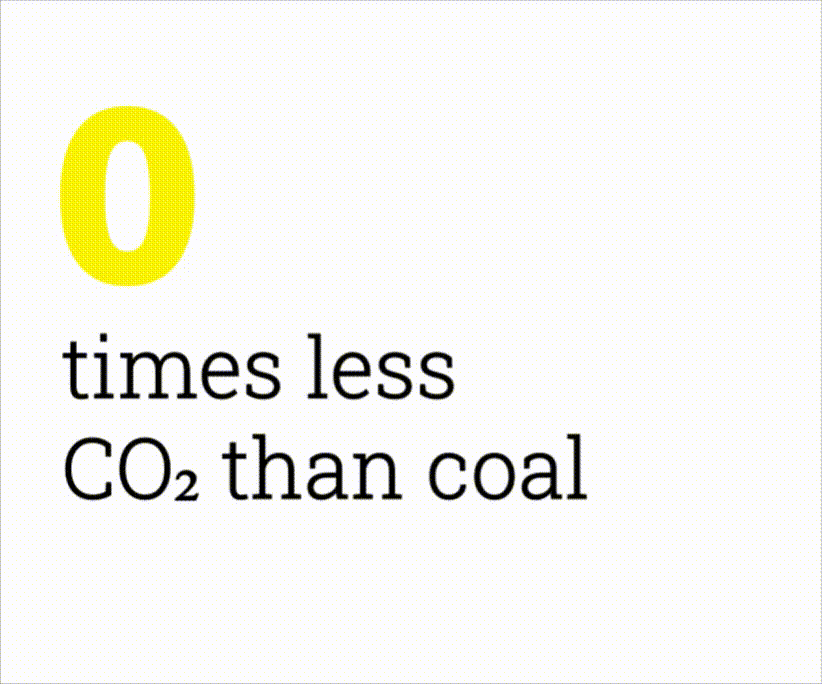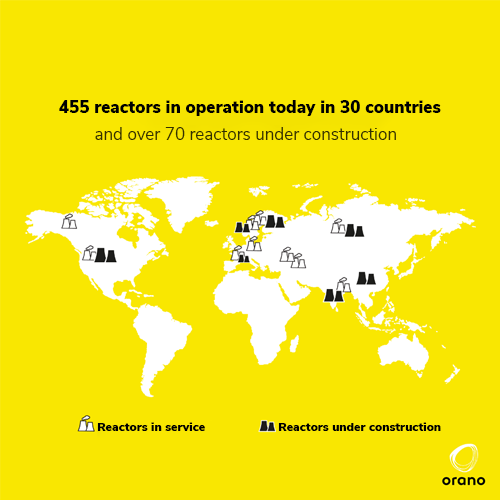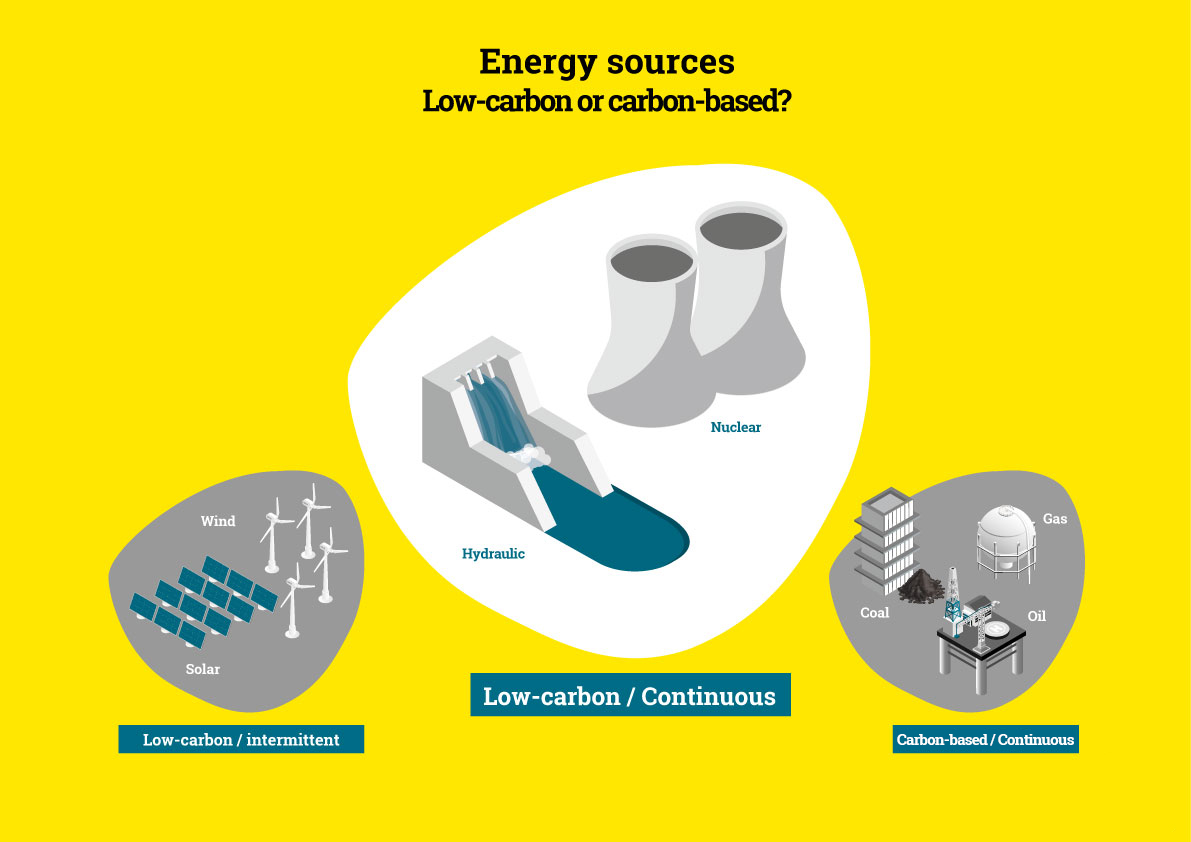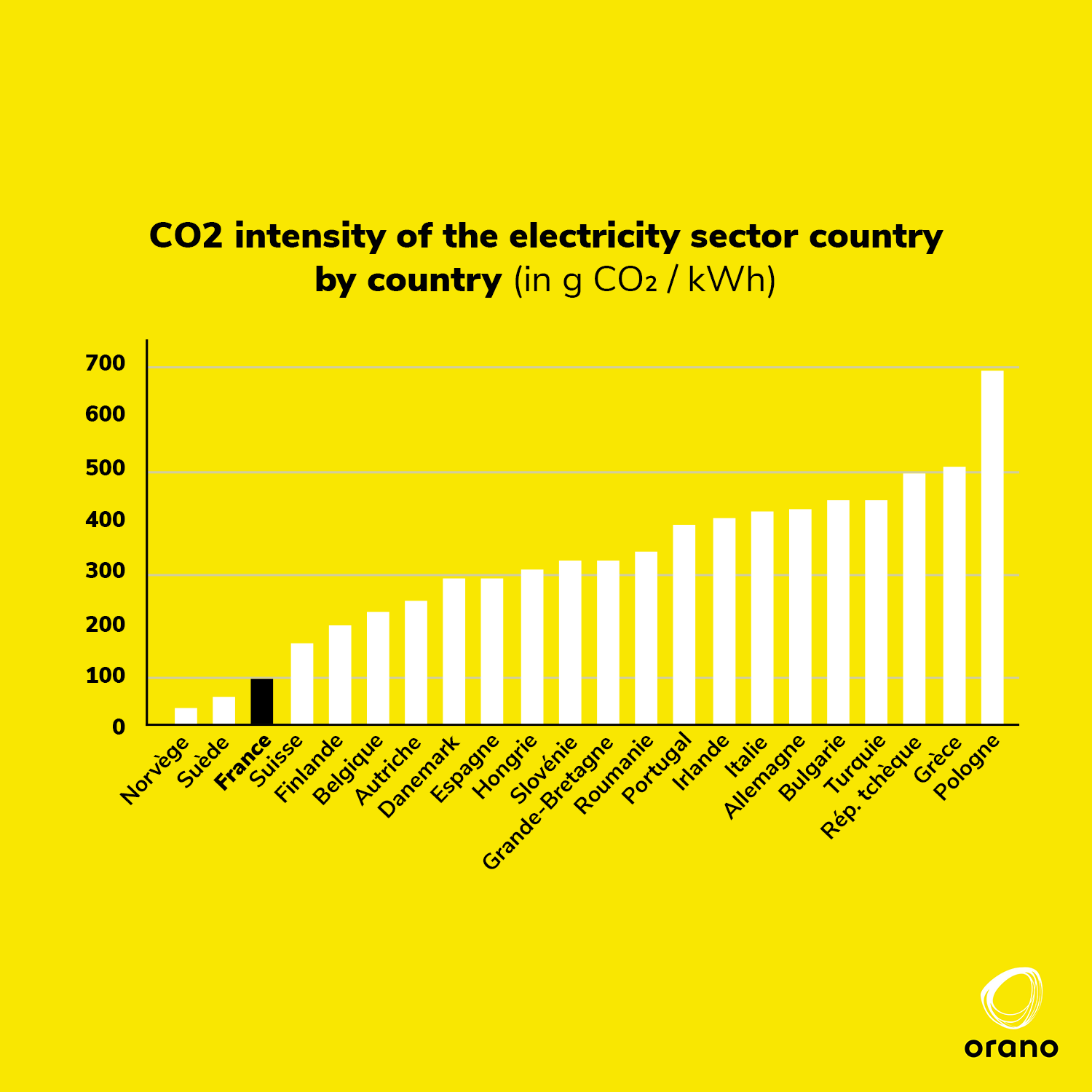
Nuclear and renewables: the solution for the climate
Nuclear power and hydropower: the potential of continuous forms of energy generation
These continuous power generation systems make it possible to supply low-carbon electricity without variations linked to meteorological or geographical conditions. They are said to be controllable. Such is the case of hydro and nuclear power.
Hydropower
The hydropower sector is the most established of the renewables. Most developed countries are therefore already well equipped with hydropower facilities. Norway is the most obvious example with very cheap and abundant hydroelectricity. There are a number of other countries that possess this natural advantage: the Canadian province of Quebec, Tasmania in Australia, Costa Rica, Brazil and Switzerland. In these countries, the hydropower production base may be substantial enough that the nuclear option is unnecessary, or an alternative to the possibility of supplementing it with other means of low-carbon electricity production. In countries like France, however, most of the sites that can be used for hydropower are already in use.
Nuclear power
Nuclear power is one of the energies that emits the least greenhouse gas (GHG) in the world, with CO2 emissions comparable to wind power and four times lower than solar.

In addition to being low carbon, nuclear power is a controllable power source capable of responding to variations in electricity demand and of providing electricity continuously throughout the year. It is also one of the least expensive means of producing electricity thanks to the reactors currently in operation. Nuclear power thus enables France to be among the countries with the lowest electricity prices in Europe and to generate 70% of its electricity autonomously.
Through the stability of its network and its continuous supply, nuclear power contributes significantly to securing electricity supply in hospitals, businesses, homes and transport around the world.
 Source : SFEN L’énergie nucléaire est industriellement disponible et déployable à grande échelle | toutes les infos par la Revue Générale Nucléaire | SFEN
Source : SFEN L’énergie nucléaire est industriellement disponible et déployable à grande échelle | toutes les infos par la Revue Générale Nucléaire | SFEN
The nuclear industry is reinventing itself to meet the challenges of 2030
- The large proportion of electricity generated by nuclear power enables France to have one of the most carbon-free electricity mixes in Europe
- Thanks mostly to nuclear power, but also to renewables including hydropower, more than 90% of France's electricity is low carbon
Wind and solar power: intermittent renewable energies
Renewable energies such as wind or solar power depend on weather conditions and the geography structure of the countries that use them. By nature, they emit very little CO2 because they use natural resources (wind, sun) to produce energy. On the other hand, if the amount of sunshine is low or the strength of the wind drops, the production of electricity stops.
This intermittent nature greatly reduces their ability to completely replace fossil fuels (oil, gas and coal) which are controllable and whose fuels are easily transported and stored.
Wind power
Wind turbines can be installed at sea or on land. The utilization rate of onshore wind energy is generally low (around 25%) due to the high variability of onshore winds. In the absence of sufficient storage solutions, onshore wind power therefore suffers seriously from its intermittency. Wind power at sea, on the other hand, allows for strong and regular winds, yielding a better utilization rate. The latter still remains lower (around 50%) than that of controllable power plants.
Solar power
Solar energy can now be harnessed in two ways: through photovoltaic panels, or through concentrator plants. Europe is the best equipped area in the world with photovoltaic panels. To compensate for the intermittency of solar and wind energy production, substantial investments need to be made in energy storage and the modernization of electricity networks (development of smart grids Introduction aux smart grids | Smart Grids - Le site édité par la CRE (smartgrids-cre.fr))

Is an energy mix with 100% renewables possible?
Having controllable energy is essential to meet variations in electricity demand. Intermittent renewables can complement a continuous electricity production. This is the case for Costa Rica, which has opted for an energy mix based on geothermal, wind and hydropower. Guaranteeing the production of electricity solely through renewables is possible for countries or regions where the geographical configuration is suitable for hydroelectric installations. This is far from being the case everywhere.
Opting today for an electricity system based on a high proportion of renewables by 2050 represents a gamble on technologies that have not yet reached maturity and that have never been deployed on the scale of a country such as France.
- First of all, intermittency requires additional resources, still at the Research & Development stage, to maintain the stability of the electrical network.
- It also requires a multiplication of sources of flexibility and storage capacities (including reserves) to cope with production and consumption contingencies, and thus ensure a steady supply at all times. Demand should adapt to supply and not the other way around.
- The installation of renewable energy production units is also extremely costly due to the number to be deployed, and must take into account the constraints of electrical transmission from production sites to consumption sites.
- The territorial footprint of each project and their social acceptability, both of which are determining factors, must also be considered.
- Finally, abandoning low-carbon controllable means of production (i.e. nuclear power), would lead to resorting to gas- or coal-fired thermal power stations, necessarily increasing greenhouse gas emissions.
Nuclear and renewables: a winning combination
IPCC experts stress that scenarios favorable to renewable energies are feasible from a geophysical point of view and need to be supported at the political level. However, they are incompatible on their own with the current and future energy needs of our societies.
If we want to keep the largest possible part of our 'modern comfort' while combating climate change, nuclear power can provide this in combination with renewables, which lend themselves more to heat production (fuels, industry, heating) than electricity generation.
Jean-Marc Jancovici
This is why the four IPCC scenarios include an increase in the use of nuclear power in combination with renewable energies to produce low-carbon electricity. Without nuclear power, using fossil energies cannot be avoided, resulting in new CO2 emissions. This is the case in Germany, which very recently authorized the commissioning of a new coal-fired power plant despite its desire to phase out the use of coal by 2038. The country now emits 9 to 10 times more CO2 than France* or Scandinavia for its electricity production.
*source : Sylvain David, CNRS researcher, on behalf of France Inter
The only countries which reach the decarbonization threshold compatible with the climate objectives are Norway, Sweden and France. Norway achieves this with almost complete reliance on hydropower. Sweden and France with a nuclear/hydro/wind/solar/biomass mix with the first two being the majority. No other country matches this, even Germany, which has already spent a minimum of 300 billion euros to install wind and solar power installations.
Combating climate change involves using low-carbon energy production technologies. The transition to a low-carbon economy will not be able to eliminate fossil fuels with a single source of energy but with a mix of energies in which nuclear power will play its part. The debate can no longer be the dogmatic ‘nuclear versus renewables’, but the pragmatic ‘nuclear and renewables’. As a result, nuclear power has, and will continue to have, an essential place in the energy transition; it ensures continuity of the production of electricity that is needed, without increasing the carbon footprint.
- Nuclear energy and climate challenges The capacity of nuclear energy to guarantee low-carbon electricity generation is invaluable to deal with the climate emergency
- 7 good reasons for turning to nuclear power to combat global warming Nuclear energy presents many advantages in the current context of the fight against global warming: discover 7 good reasons to capitalize on this form of energy.
- It is urgent to commit to the low-carbon transition Jean-Marc Jancovici, a recognized expert on energy and climate, challenges us and raises our awareness of the urgent need to make the transition to low-carbon forms of energy.
